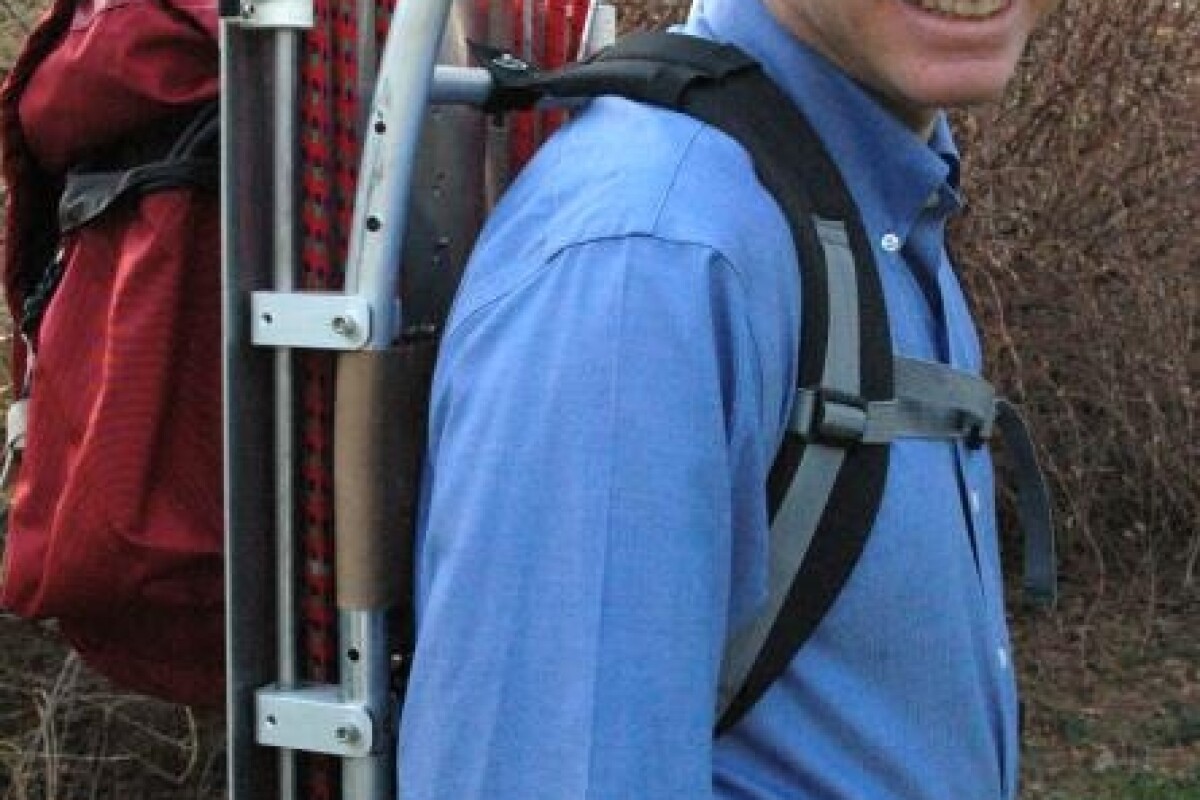December 30, 2006 Biologists at the University of Pennsylvania have announced details for a suspended-load ergonomic backpack that reduces the force of a backpacks load on the wearer by 86%, allowing wearers to run far more comfortably with heavy loads. The backpack was created with soldiers and emergency workers in mind and could prevent the sort of muscle and joint injuries associated with running while carrying heavy items. The backpack will also benefit schoolchildren, since heavy school bags have been linked to muscle and orthopedic injury. "For the same energetic cost, you can either carry 48 pounds in a normal backpack or 60 pounds in a suspended-load ergonomic backpack," Larry Rome, a professor in Penn's Department of Biology, said. "It is like carrying an extra 12 pounds for 'free.'"
The backpack is based on a rigid frame pack, much like the type familiar to hikers everywhere; however, rather than being rigidly attached to the frame, the sack carrying the load is suspended from the frame by bungee cords.
Last year, Rome, an expert in the physics of muscle movement, introduced a power-generating backpack that converts mechanical energy from walking into as much as 7.4 watts of electricity, more than enough energy to power a number of portable electronic devices at once. His findings were published in Science.
The suspended-load ergonomic backpack has a similar sliding motion as the electricity generating-backpack, but it is tuned differently. Rather than having stiff springs, the load is suspended by very compliant bungee cords.
"The ergonomic backpack reduces the force of the load on the wearer by reducing the effect of the load as it shifts up and down," Rome said. "What is striking is that you can feel the 86% reduction in force with every step."
With a normal backpack, the peak force exerted by the load on the body during walking is twice as high as the static force, and during running its three times as large, exerting extreme forces on the joints.
The backpack shifts the timing of how force is applied as the wearer takes a step.
Essentially, the bungee cords permit the load to stay at nearly constant height from the ground while the wearer walks or runs around it, Rome said. The pack actually reduces the metabolic cost of walking from one point to another by about 40 watts, or the equivalent of carrying 12 extra pounds.
Penn researchers involved in development and testing of the Suspended-load Backpack at the Rome laboratory at Penn are Louis Flynn, an engineer, and postdoctoral fellow Taeseung D. Yoo. Funding for this research comes from the National Institutes of Health and the Office of Naval Research.













